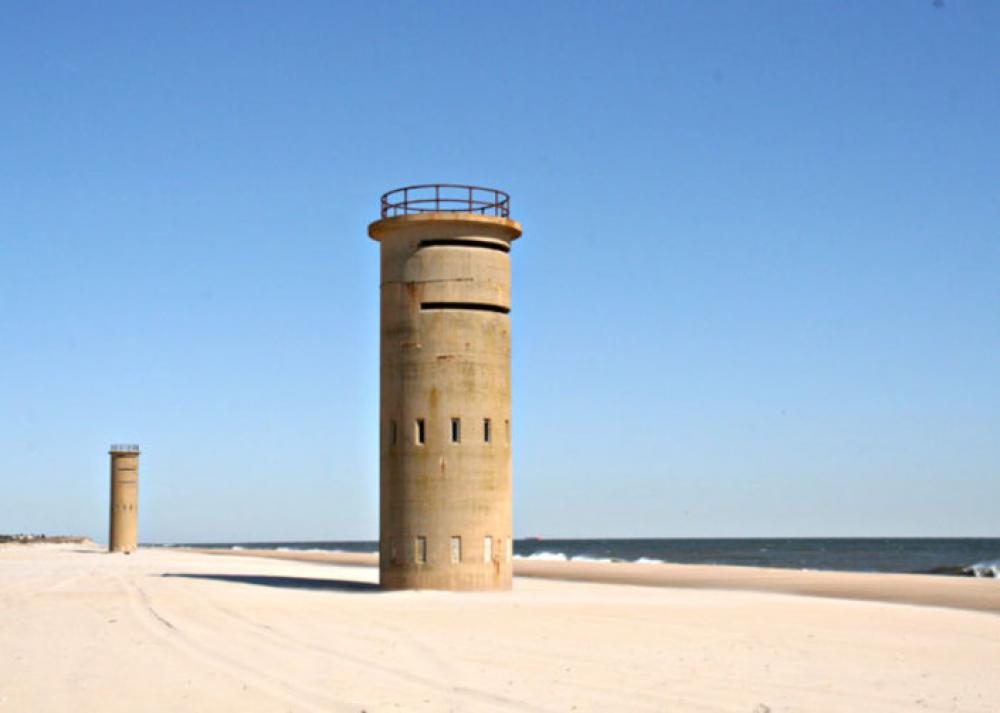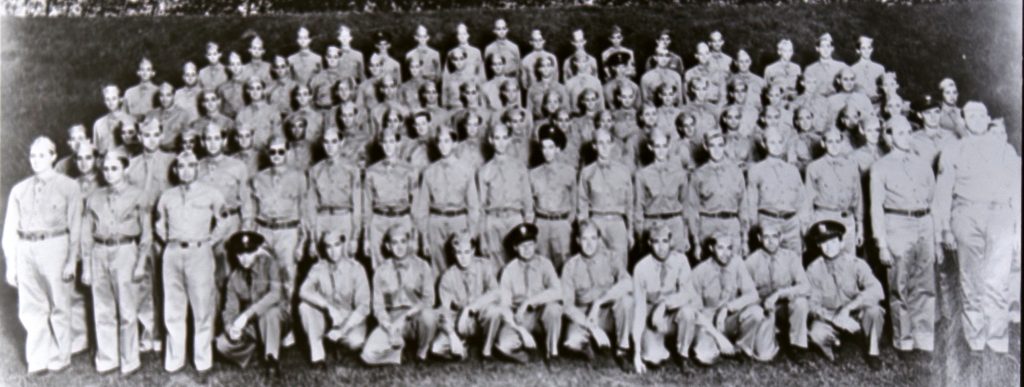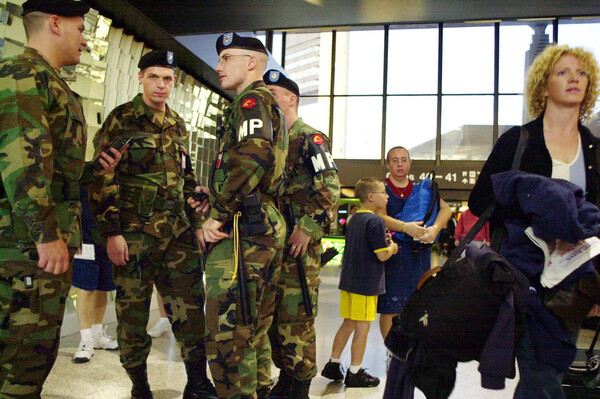By Kevin Brown
Coastal defense was an ongoing theme in American military history from 1776 to the beginning of the Cold War. The country’s leadership saw the United States as vulnerable to attacks and invasions. The rise of fascism in the 1930s under Adolf Hitler, Hideki Tojo, and Benito Mussolini only heightened anxieties. Increasingly belligerent Axis nations heavily invested in their air and naval forces for impending global conflicts.
President Franklin Delano Roosevelt federalized the National Guard in August 1940, after the previous year witnessed the rapid fall of Poland and France to Nazi Germany. In addition to training for conventional warfare with the Great Maneuvers, the Guard took responsibility for homeland defense on the east and west coasts.
American strategists saw the Atlantic coast as vulnerable to Axis attacks and sabotage attempts. Hitler’s Kriegsmarine launched a U-Boat campaign targeting global shipping to force Great Britain out of the war. The FDR Administration, in the months before Pearl Harbor, established the Eastern Command in response to Hitler’s threats to the American homeland.
A Kriegsmarine (German Navy) U-Boat Service Propaganda Poster.
(Courtesy of Hunting New England Shipwrecks)
The Eastern Command oversaw the protection of vital ports and coastlines from its headquarters on New York City’s Governor’s Island. National Guard units from around the country contributed to its structure, including locally based coastal artillery formations in Delaware, North Carolina, and New York, among many others.

Observation towers in Cape Henlopen Delaware That were Part of Fort Miles.
(Courtesy of Visit Delaware)
National Guard units occupied fortifications, typically near significant harbors where German activity existed. A prominent example of one of these coastal forts is at Cape Henlopen, Delaware’s Fort Miles, which served as an observation and protection point for the Philadelphia and Baltimore harbor channels.

The Georgia Guard’s 128th Observation Squadron
Poses for a Photo in Atlanta Sept. 8, 1941.
(Courtesy of the Georgia National Guard History Blog)
The National Guard’s aerial squadrons were also active in anti-submarine operations along the southern seaboard. The most notable air squadron to take part was the Georgia National Guard’s 128th Observation Squadron, which, from 1942-43, conducted patrol missions over the Gulf of Mexico using O-47s and B-25 Mitchells to hunt Hitler’s U-Boats. Smaller Guard detachments out of South Carolina also participated in efforts to prevent German attack.

GANG B-25 Mitchells Conducting a Reconnaissance Mission
Over the Gulf of Mexico.
(Courtesy of the Georgia National Guard History Blog)
The threat was more geographically dispersed on the other side of the country. Imperial Japan had built a giant navy since 1900, posing a challenge to America’s Pacific territories.
The New Mexico National Guard’s 200th and 515th coastal defense units played a crucial role in defending the Philippines. The New Mexico National Guard units were chosen because of their high numbers of Spanish speakers, the Philippines having been a Spanish possession until 1898. When Bataan and the Philippines fell after Pearl Harbor, thousands of Americans, including the Guardsmen, and Filipinos died in Japanese captivity.
The New Mexico National Guard’s 200th Band in Bataan.
(Courtesy of the Santa Fe New Mexican)
Following the fall of Bataan, the Japanese also attacked and occupied minor Alaskan strait islands in the Aleutian Islands. This example of Japanese aggression caused some to fear an invasion of North America. However, US and Canadian forces led by Arkansas’s 206th Coastal Artillery Regiment made Japan’s position in the island chain untenable.
These attacks unnerved the American public, making it clear that the Axis powers seriously threatened the homeland. The ill-fated defense of Bataan only added to the feeling that the Japanese would eventually attack American shores. American military planners worried about strikes along the Pacific coast.
Rising concerns among Guard leaders were compounded after Japan staged an attack on Sydney Harbor in Australia. Additionally, Santa Barbara was bombarded by Japanese submersibles on February 23rd, 1942. The result was one of the most significant false alarms of the war, with the Battle of Los Angeles on the night of February 24th, 1942. The Washington National Guard’s 37th Coast Artillery Brigade spent several hours firing at unknown aircraft, believing Japanese forces were launching an assault. This reaction created a national controversy over the Guard’s role in homeland defense, as the incident severely damaged civilian property.

An LA Times Cover Discussing the “Battle of Los Angeles”
a Day after the 1942 Incident.
(Courtesy of the Los Angeles Times)
In June 1942, the FBI uncovered the German Abwehr’s Operation Pastorius, resulting in the capture of eight Nazi agents. Tasked with economic sabotage, they infiltrated New York and Florida via U-Boats. Meanwhile, within the same month, a Japanese submarine shelled National Guard forces at Fort Stevens in Astoria, Oregon.

Craters Caused by Japanese Shelling of Fort Stevens, Oregon.
(Courtesy of the National Archives and Records Administration)
Meanwhile, evolutions in military technology made coastal defense an aging concept in modern war. National Guard coastal defense units deployed to various combat theaters worldwide after 1943 when threats to the homeland subsided. By 1950, the armed forces repurposed all coastal defense units and fortifications for other uses. The rapid changes in military technology since World War II including long-range aircraft, ballistic missiles, and advanced warning radars, rendered coastal defense obsolete.
Massachusetts Army Guardsmen at Boston Logan Airport
After 9/11 in October 2001.
(Courtesy of Getty Images)
The National Guard’s contributions to coastal defense during World War II was critical. The Guard protected the American homeland, providing capabilities and staffing to protect shipping from further Axis attacks. A WWII Sea coast defense legacy continues today, where the Guard has taken a leading role in protecting American infrastructure from terrorism and great power threats.




